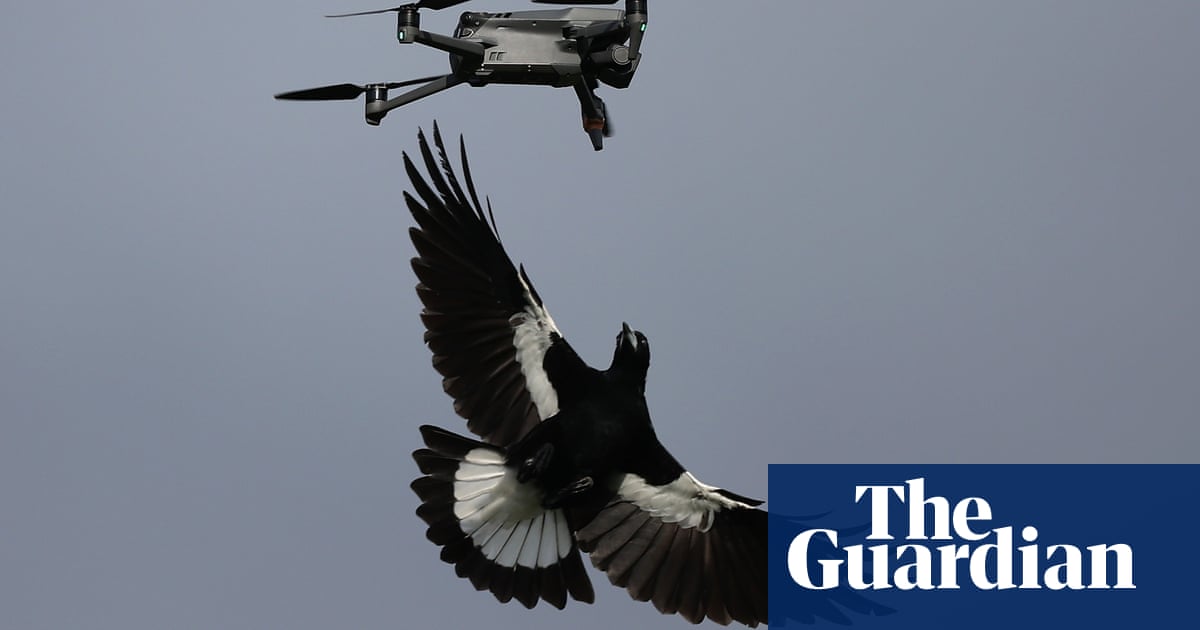Australiaâs infamous magpies have started to attack â but theyâre not the only birds you might fall victim to this swooping season.
Lesser known suspects including noisy miners, butcherbirds and masked lapwings also swoop to protect their eggs and young, typically between August and October.
Unlike magpies, which Sean Dooley from BirdLife Australia said tended to fly âbehind you and hit you hardâ, other birds take a different approach.
Magpie-larks (which resemble but are unrelated to magpies) and noisy miners tend to dive in from the front.
âIâve even had a magpie-lark hover in front of me with its claws out as it tries to drive you away [from its young] ⦠so they can cause some severe damage, especially if they come into contact with your eyes,â Dooley said.
Masked lapwings, also known as spur-winged plovers, will swoop âaggressively and make a really big clattering noiseâ, in contrast with other plovers, which typically run away and pretend to be injured to distract potential threats, according to Dooley.
He said the swoop of the noisy miner, previously described by the Australian National University ecologist Richard Beggs as âAustraliaâs most hated birdâ, was also big on bluff.
The miners are also known to grab peopleâs food, according to Dr Meg Edwards, a lecturer in wildlife science at the University of Southern Queensland, who was swooped while picnicking in a park. They also take on much bigger birds, including kites and eagles, if they fear they are getting too close to their nests.
after newsletter promotion
While it may seem as though Australiaâs birds set the rules at this time of year, Edwards said the majority did not swoop, and just 10% of magpies are estimated to do so.
An article published in the journal Clinical & Experimental Ophthalmology found that while 40% of all bird-related eye injuries at Victorian Royal Eye and Ear hospital between 1 January 2006 and 31 December 2022 were magpie-inflicted, the magpie-lark was the second main culprit, contributing to 6% of cases. In almost half of cases, the species responsible was not identified.
Edwards advised avoiding nests during the breeding season â between July and November â but said even the most cautious could still be swooped. âIn the animal world, we can never say anythingâs a guarantee ⦠never say never.â
Even Dooley, who has studied birds for almost his whole life, went 20 years without being swooped at a particular site before being dived-bombed unexpectedly one night.
He said swooping was more common in populated areas where birds âcanât keep a tally of whoâs a friend and whoâs a foeâ.
Dooley stressed that individual birds only swoop for a few weeks and urged people to understand why they did so, which he said would make them âless likely to want to take retributionâ and help them strategise to stay safe.
He recommends âgetting out of the area as quickly and as calmly as you canâ, which will not âexacerbate and entrench the view the bird has that youâre a threatâ.
The Magpie Alert tracker has recorded 2,157 magpie swoops so far this year, resulting in 279 injuries.



